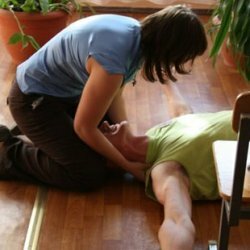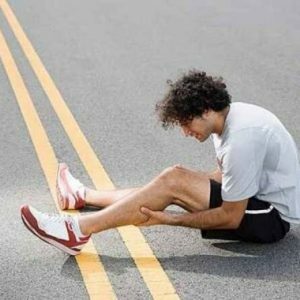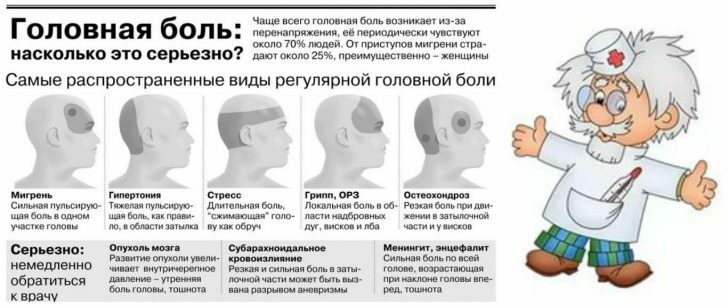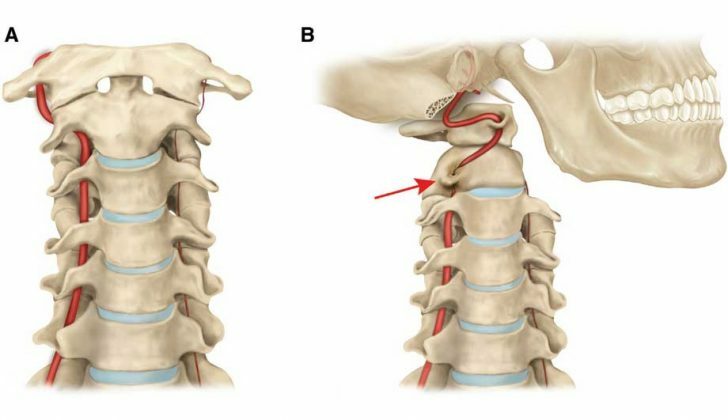Absence - an uncontrolled seizure
 Absence is called "disconnection" or sudden loss of consciousness for a few seconds. This is a kind of epileptic attack during which a person, without any preliminary precursors, ceases to react to external stimuli, his speech breaks off in mid-sentence, and the sight becomes absent. Sometimes there may be hyperemia or, conversely, pallor of the skin, twitching of the eyelids. This condition lasts about 15-20 seconds, after which normal mental activity is usually restored. Characteristic is the complete lack of memories of this, so the person continues the interrupted occupation, as if nothing had happened.
Absence is called "disconnection" or sudden loss of consciousness for a few seconds. This is a kind of epileptic attack during which a person, without any preliminary precursors, ceases to react to external stimuli, his speech breaks off in mid-sentence, and the sight becomes absent. Sometimes there may be hyperemia or, conversely, pallor of the skin, twitching of the eyelids. This condition lasts about 15-20 seconds, after which normal mental activity is usually restored. Characteristic is the complete lack of memories of this, so the person continues the interrupted occupation, as if nothing had happened.
In the last century, until the 1920s, the absences were all episodes with impaired consciousness and fading. Later the concept was narrowed, and this term was used to denote a certain type of seizures in benign forms of epilepsy.
Absenses are considered one of the most common types of epileptic seizures in children. Usually they first appear in 5-6 years, but not earlier, which is associated with a certain maturity of the brain. The frequency of their manifestation is very high and can be measured dozens of times a day. Children affected by this pathology should be constantly observed during their stay in the water because of the risk of choking. Adults with such a disease are eliminated from the management of vehicles and other equipment, which requires maximum concentration.
Causes of absence of
Usually, this condition is caused by a violation of the electrical activity of nerve cells in the brain. Normally, neurons transmit to each other periodic signals of a chemical or electrical nature, resorting to the help of synapses, which serve as a kind of link between the cells. In people with convulsions, this activity is extremely active - the signals can be repeated every three seconds during the absence.
Science does not yet have an exact answer to the question about the reasons for this activation, but there is reliable information that the absences are transmitted genetically by the dominant type. This means that the disease is peculiar to "swim" in every generation. It may not appear for a long time and make itself felt completely unexpectedly. For example, it can cause trauma, pregnancy, hormonal changes during the puberty period. Nervous overexertion, toxic poisoning of the body, lack of sleep, infectious diseases - all these conditions can become a trigger.
Very often, absences occur after waking up in the morning or before going to bed. To emerge during the wakefulness reduction is their characteristic feature.
Types of absences
Symptoms of simple absences were described at the beginning of the article. In addition, there are also complex attacks, they are called myoclonic, atonic, akinetic absences.
Myoclonic absences are usually provoked by auditory or visual stimuli. These are short-term, sharp, as if from electric shock, flinches in the proximal parts of the body. At such a time, consciousness is preserved, but a person can lose balance or drop an object from his hands.
Atonic absences show a complete weakening of the muscle tone, resulting in the knees bending and the child or adult literally falling. Then he gets up very slowly. Sometimes this condition can manifest only relative to the muscles of the neck, because of which the head involuntarily bends. Such seizures often have a faint-like character and last a little longer than usual. Perhaps involuntary urination.
Akinetic absences in their clinic almost do not differ from atonic seizures, but after a sharp fall the person in most cases very quickly gets up and continues to do what he did before falling. Seizures are not characteristic, and the seizures themselves are so unexpected that there are significant bruises.
Atypical absences are seizures that occur as a result of a severe traumatic brain injury, that is, acquired. With short-term loss of consciousness, severe convulsions are observed.
There are also childless absences and juvenile absences with a debut of 12-14 years.
Diagnosis of absences
Diagnosis can be made during the examination and collection of anamnesis, but for an accurate statement the doctor must fix the seizure himself.
The main diagnostic procedure for detecting absence seizures is an electroencephalogram( EEG), or even better, if it is a video EEG.On the patient's head wear a special cap with electrodes for recording waves of electrical brain activity. Then an attack is provoked with the help of flickering lights on the monitor. But if you can not perform such a survey, fit can be recorded using a conventional video camera. Recording should be done during the passage of a special test for hyperventilation, during which it is necessary to stand with arms outstretched in front of you and count aloud the number of movements of the chest during breathing. The duration of the test is three minutes. This procedure almost one hundred percent causes absences in the sick person. Counting out loud is necessary to fix a disturbance of consciousness.
As a diagnostic tool, magnetic resonance imaging is used - scanning brain balls to exclude tumors or brain strokes.
Treatment and prevention of
Treatment consists in muffling excessive and unnecessary activity of the brain, which gives a convulsive discharge with the help of anticonvulsants and is the prevention of severe manifestations of epilepsy.
Even if cramps are absent in absences, it is very important to prevent this condition because of its danger. After all, at such moments a person completely loses control over his body and mind, and this is a threat to life, especially if he works in production. Therefore, with the first symptoms that indicate the presence of this disease, you need to see a doctor as soon as possible. With the help of modern preparations, absences can be almost completely eliminated.
Absenses, which began in childhood, terminate at the age of 20, and juvenile - often continue in adults.
With atypical absences the forecast is unfavorable, since it is not always possible to suppress convulsions and in parallel there is a violation of mental abilities that is progressing.
In general, for the treatment to have a positive effect, you must also observe the regime of the day and fully rest, try to avoid sudden awakenings. Under the ban are electroprocedures, alcohol consumption and excessive physical activity.
It is known that the absence is provoked by the lack of sleep for a long period, so for successful prevention of the disease should be given to sleep enough time. Doctors recommend refraining from visiting discos and avoiding traumatic situations.
Positively on the course of the disease affects the milk and vegetable diet, outdoor activities, moderate physical activity, as well as compliance with the work regime.



